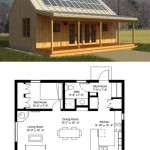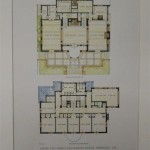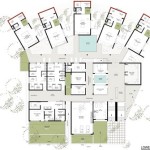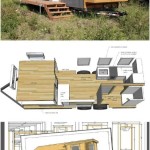Space-Saving Home Floor Plans: Essential Considerations
In today's urbanized world, living spaces are becoming increasingly compact. Designing homes that maximize space utilization has become paramount. Space-saving home floor plans offer ingenious solutions to optimize every square foot without sacrificing comfort or style.
Open Floor Plans
Open floor plans seamlessly connect multiple living areas, eliminating unnecessary walls and partitions. This creates a spacious and airy atmosphere while promoting fluidity and interaction between different zones. Consider combining the living room, dining area, and kitchen into a single open space to maximize space.
Multi-Purpose Rooms
Multi-purpose rooms serve multiple functions, maximizing space and eliminating dedicated areas for each activity. A spare bedroom can double as a guest room and home office. A loft can serve as a cozy reading nook or extra storage space. By seamlessly integrating different functions into a single room, you create a versatile and space-efficient living environment.
Vertical Space Utilization
Take advantage of the vertical space in your home to create additional storage and living areas. Install floating shelves, utilize wall-mounted furniture, and consider mezzanine levels to add extra space without expanding the footprint of your home. Vertical gardening is another creative way to maximize space and bring nature indoors.
Built-In Storage
Incorporate built-in storage throughout your home to declutter and keep spaces organized. Install hidden compartments in walls, under stairs, or within furniture. Utilize modular storage systems that can be customized to fit specific needs and spaces.
Furniture Selection
Choose furniture that is both functional and space-saving. Opt for beds with built-in drawers, ottomans with storage compartments, and nesting tables that can be easily tucked away when not in use. Multi-purpose furniture, such as sofa beds and coffee tables with hidden storage, maximizes space while providing essential functions.
Natural Light
Natural light not only enhances the ambiance of a home but also makes it feel more spacious. Maximize natural light by incorporating large windows, skylights, and glass doors. Light-colored walls and reflective surfaces help bounce light around, making rooms appear larger and brighter.
Declutter and Organize
Regular decluttering and organization are essential for maintaining a space-efficient home. Remove unnecessary items, donate or discard anything you don't use, and establish designated storage areas for everything. Utilize vertical organizers, drawer dividers, and storage containers to keep spaces tidy and clutter-free.
Consider Your Lifestyle
When planning a space-saving home floor plan, consider your lifestyle and daily routines. Determine which areas of the home are most important to you and allocate space accordingly. If you entertain frequently, prioritize a spacious living area. If you work from home, ensure you have a dedicated workspace.
By implementing these essential aspects, you can create a space-saving home floor plan that maximizes every precious square foot without compromising comfort or style. Remember, it's all about optimizing space, embracing multi-functionality, and creating a home that feels both spacious and inviting.

Affordable Home Design Efficient Floor Plans

Space Saving Tiny Home Layout Small Apartment Design House Floor Blueprints

Space Saving Home Design Bungalow Floor Plans Budget House Modern
Est House Plans To Build Simple With Style Blog Eplans Com

Stylish And Simple Inexpensive House Plans To Build Houseplans Blog Com

These Small House Plans Pack A Lot Of Punch Houseplans Blog Com

Space Saving Studio Layout Interior Design Ideas

Floor Plan Detail Modular Home Plans Ranch House

Tiny House Plan Examples

Space Efficient Home Office With Lots Of Light








